Robert Nanteuil (1623-1678) remains one of the most distinguished figures in the history of French art, particularly celebrated for his exceptional skill as an engraver, printmaker, and pastel draughtsman. Living and working during the opulent reign of Louis XIV, Nanteuil not only produced a remarkable corpus of portraits that captured the likenesses of the era's most influential personalities but also significantly contributed to the elevation of printmaking as a legitimate and respected art form. His meticulous technique, profound psychological insight, and unwavering dedication to his craft set a new standard for portrait engraving, leaving an indelible mark on subsequent generations of artists. This exploration delves into the life, artistic evolution, major achievements, and lasting impact of a man who masterfully wielded the burin and pastel to immortalize the faces of 17th-century France.
Early Life and Artistic Awakening in Reims
Born in Reims, France, in 1623, Robert Nanteuil was the son of Lancelot Nanteuil, a wool merchant. His early education was grounded in the classics at the Jesuit college in Reims. While this environment provided a strong intellectual foundation, it did not initially foster his burgeoning artistic inclinations. Indeed, records suggest that his early passion for drawing and carving was not particularly encouraged. However, Nanteuil's innate talent could not be suppressed. During his leisure time, he reportedly engaged in carving wood and, more significantly, began to teach himself the rudiments of engraving by meticulously imitating old copperplate prints. Among these early self-taught exercises were depictions of "Christ" and the "Virgin," demonstrating a precocious ability to handle the demanding tools and techniques of the engraver's art even without formal instruction.
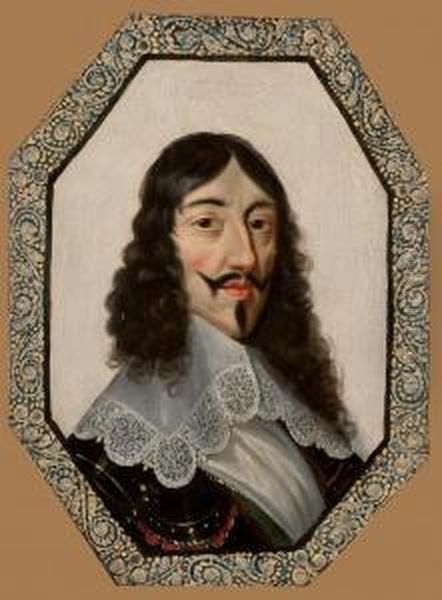
This period of self-discovery was crucial. It highlights a determination and a natural aptitude that would define his later career. While his family background was in commerce, Nanteuil's artistic calling was evidently strong. His decision to pursue art, particularly the technically challenging field of engraving, in an era when it was often considered more of a craft than a high art, speaks to his conviction. The city of Reims itself, with its rich history and artistic heritage, including the famed cathedral, may have provided a backdrop that, consciously or unconsciously, nurtured his aesthetic sensibilities.
The Parisian Ascent: Training, Marriage, and Early Influences
Nanteuil's formal artistic journey began in earnest between 1642 and 1643 when he apprenticed with the engraver Nicolas Regnesson in Reims. This period was formative, providing him with structured training and a deeper understanding of the technical aspects of printmaking. His relationship with Regnesson extended beyond the professional, as Nanteuil would later marry Regnesson's sister, Jeanne Regnesson, further cementing his ties within the artistic community. For a brief period, Nanteuil even delved into the study of philosophy at a monastery, a rather unusual path for an aspiring artist. Remarkably, he is said to have completed his philosophy thesis by illustrating it with his own engravings, a testament to his integrated intellectual and artistic pursuits.
Around 1647, seeking greater opportunities and a more vibrant artistic environment, Nanteuil made the pivotal decision to move to Paris. The French capital was the epicenter of artistic innovation and patronage, especially under the burgeoning influence of the court. In Paris, Nanteuil's talent quickly gained recognition. He began to associate with prominent artists and intellectuals, and his skills, particularly in pastel portraiture and engraving, found a receptive audience.
Initially, his style bore the imprint of established masters. The influence of Philippe de Champaigne, a leading painter of the French Baroque, is discernible in Nanteuil's early Parisian works, particularly in the dignified and psychologically astute portrayal of his sitters. Champaigne's sober realism and his ability to convey the inner character of his subjects provided a powerful model. Nanteuil also studied the techniques of other engravers, such as the distinctive linear style of Claude Mellan, known for his audacious single-spiral line engraving of the Face of Christ, and the more conventional but highly skilled work of his own former master and brother-in-law, Nicolas Regnesson. These influences were foundational, but Nanteuil was not content to merely imitate.
Forging a Unique Style: Precision, Tactility, and Psychological Depth
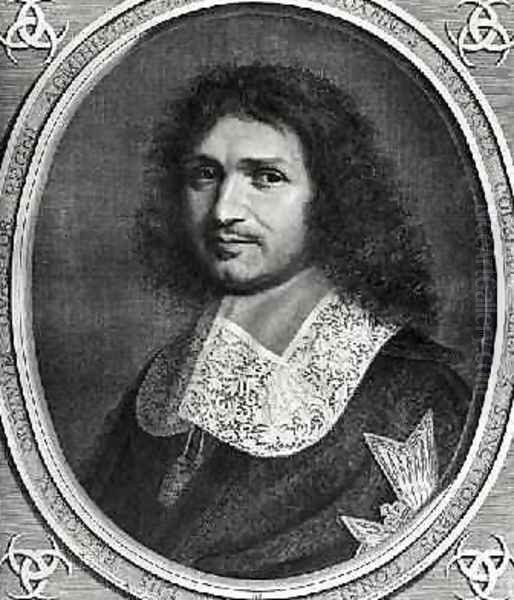
As Robert Nanteuil matured as an artist in Paris, he began to synthesize his influences and develop a highly personal and distinctive style that set him apart from his contemporaries. While his early works might have shown traces of Claude Mellan's systematic use of parallel and swelling lines, or the more conventional cross-hatching favored by engravers like Nicolas Regnesson, Nanteuil gradually moved towards a more nuanced and sophisticated approach. His primary aim became the truthful and insightful representation of his sitters, capturing not just their physical features but also their character and social standing.
A hallmark of Nanteuil's mature style was the extraordinary precision and completeness in the depiction of the human face. He rendered flesh with a remarkable subtlety, using a complex interplay of fine lines, delicate stippling (dots), and subtle cross-hatching to model forms and convey texture. This allowed him to achieve a lifelike quality that was both elegant and penetrating. He paid meticulous attention to the eyes, often described as the windows to the soul, ensuring they conveyed a sense of presence and individuality.
Beyond the face, Nanteuil demonstrated a masterful ability to render the tactile qualities of various materials. The rich velvets, shimmering silks, intricate lace, and lustrous armor of his sitters' attire were brought to life through his varied and inventive use of the burin. He understood how different textures interacted with light, and he translated these observations into a rich vocabulary of engraved marks. This sensitivity to surface and detail contributed significantly to the overall realism and opulence of his portraits. His backgrounds were often kept simple, typically a neutral space or a subtle architectural element, ensuring that the focus remained squarely on the sitter. This approach, influenced by painters like Philippe de Champaigne, emphasized the dignity and psychological presence of the individual.
Masterpieces and Notable Sitters: A Gallery of 17th-Century France
Robert Nanteuil's oeuvre comprises approximately 300 prints, the vast majority of which are portraits. These works form a veritable gallery of the most important figures in French society during the mid-17th century, including royalty, ministers, ecclesiastics, nobles, and fellow artists and writers. Many of these engravings were impressively scaled, often approaching life-size, which lent them a commanding presence.
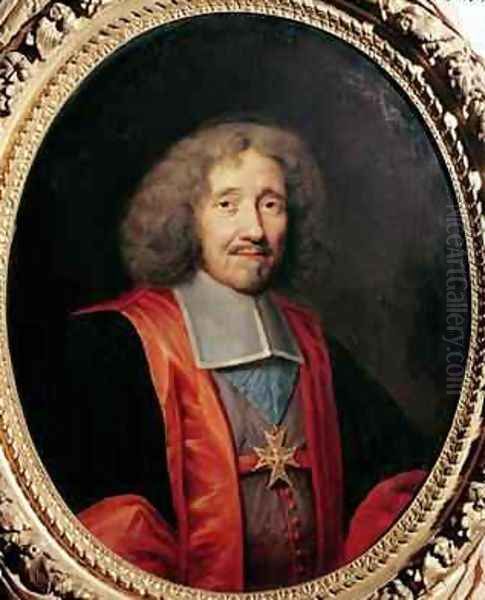
Among his most celebrated works is the portrait of Cardinal Mazarin, created in several versions, with a particularly notable one from 1652. Jules Mazarin, the powerful chief minister of France, is depicted with an air of astute intelligence and authority. Nanteuil masterfully captures the Cardinal's shrewd gaze and the subtle complexities of his expression, all while rendering the rich textures of his ecclesiastical robes with exquisite detail. This portrait, like many others, was often based on Nanteuil's own pastel drawings made from life, which allowed for a more intimate and accurate initial study.
Another significant work is his Portrait de Louis XIII, engraved in 1658, some years after the king's death, likely based on earlier paintings or likenesses. While posthumous, it conveys a regal dignity. However, it was his portraits of the reigning monarch, Louis XIV, that truly solidified his reputation. Nanteuil produced several engravings of the Sun King at various stages of his early reign, capturing the youthful monarch's developing confidence and majesty. These royal portraits were crucial for disseminating the king's image and projecting his power.
Nanteuil also immortalized many other prominent figures. His portrait of Anne of Austria, the Queen Mother, is a study in dignified matriarchy. He engraved portraits of key ministers like Jean-Baptiste Colbert and Michel Le Tellier, conveying their gravitas and intellectual prowess. High-ranking clergy such as Hardouin de Péréfixe de Beaumont, Archbishop of Paris, and military leaders like Henri de La Tour d'Auvergne, Vicomte de Turenne, were also among his subjects. Beyond the circles of power, Nanteuil portrayed intellectuals and writers, including the scholar Gilles Ménage and the chronicler Jean Loret, demonstrating the breadth of his connections and the demand for his skill across different echelons of influential society. Each portrait is a testament to Nanteuil's ability to adapt his approach to the individual, highlighting their unique character while adhering to the conventions of formal portraiture.
Royal Patronage and the Elevation of Printmaking
Robert Nanteuil's exceptional talent did not go unnoticed by the highest echelons of French society, most notably King Louis XIV. His skill in capturing not only a likeness but also the character and status of his sitters made him highly sought after. Around 1658, Nanteuil received the prestigious appointment of Dessinateur et Graveur Ordinaire du Roi (Designer and Engraver in Ordinary to the King). This royal appointment came with an annual pension and, more importantly, official recognition of his artistic merit. It placed him firmly within the orbit of the royal court, providing him with unparalleled access to the most influential figures of the realm.
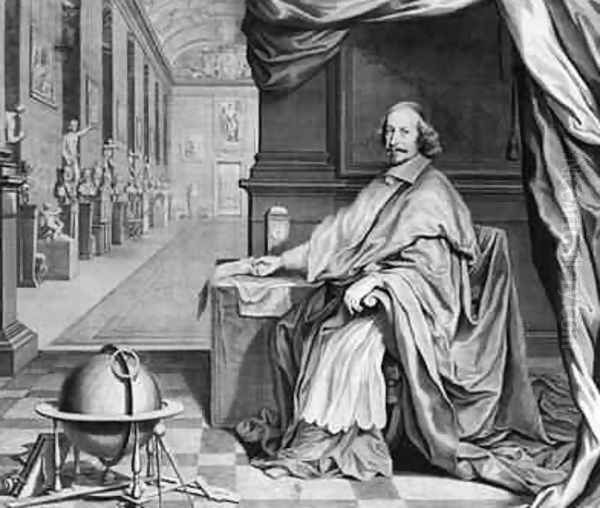
Perhaps Nanteuil's most significant and lasting achievement, beyond his individual artworks, was his role in elevating the status of engraving as an art form. In 17th-century France, engraving, particularly reproductive engraving, was often categorized as a mechanical craft rather than a liberal art, placing engravers on a lower social and professional footing than painters and sculptors. Nanteuil, through the sheer quality and originality of his work, particularly his portraits engraved from his own life drawings, challenged this perception.
His influence was instrumental in the promulgation of the Edict of Saint-Jean-de-Luz in 1660. This royal decree, issued by Louis XIV, officially separated printmaking, especially original etching and engraving, from the merely mechanical arts and crafts. It granted engravers privileges similar to those enjoyed by painters and sculptors, including membership in the prestigious Académie Royale de Peinture et de Sculpture. This was a landmark decision that had profound implications for the artistic community. It acknowledged the intellectual and creative labor involved in fine printmaking and helped to foster a greater appreciation for the medium. Nanteuil's own career, characterized by artistic integrity and high social standing, served as a powerful argument for this reclassification. He was not just a technician but an artist who brought profound insight and originality to his chosen medium.
Technical Innovations and Artistic Practice
Robert Nanteuil was not only a master of existing engraving techniques but also an innovator who refined his methods to achieve unprecedented levels of subtlety and expressiveness. His primary medium was line engraving, executed with a burin on a copper plate. He developed a highly sophisticated system of lines – varying their thickness, density, and direction – to model form, create texture, and suggest light and shadow. He often combined parallel lines with delicate cross-hatching and stippling to render the soft transitions of flesh tones, a departure from the more systematic and sometimes rigid linear patterns of some of his predecessors like Claude Mellan.
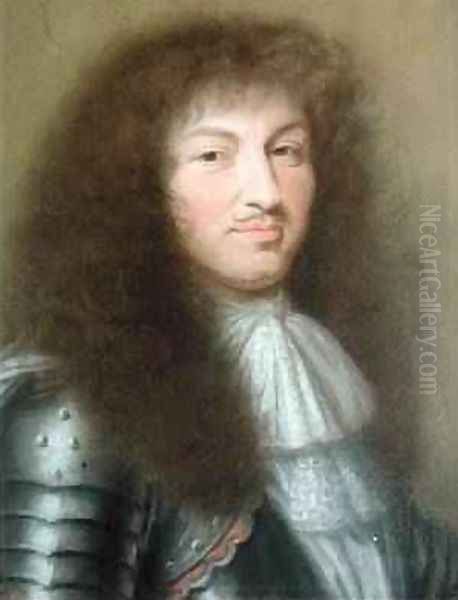
A crucial aspect of Nanteuil's practice was his use of pastel drawings as preparatory studies for his engravings. He was a highly accomplished pastelist, and these drawings, often made from life, allowed him to capture the sitter's likeness and character with immediacy and freshness. Pastels, with their soft texture and rich color (though Nanteuil often worked in monochrome or limited palettes for his preparatory sketches), enabled him to explore nuances of expression and lighting before committing the image to the more laborious medium of engraving. This practice of working from his own original drawings, rather than solely reproducing paintings by others, distinguished him as an original creative artist, not just a reproductive craftsman. This emphasis on original observation contributed significantly to the vitality and psychological depth of his engraved portraits.
He also experimented with the presentation of his prints. Many were produced in relatively large formats, giving them a presence comparable to painted portraits. The framing devices within the prints themselves, such as ovals or cartouches, were often elegantly designed, sometimes incorporating allegorical elements or inscriptions that enhanced the sitter's dignity and status. While he did not invent these presentational strategies, he employed them with a refined aesthetic sense that complemented the quality of the portrait itself. His technical virtuosity was always in service of the portrait's overall impact, aiming for a harmonious blend of likeness, characterization, and artistic elegance. His influence extended to the careful printing of his plates, ensuring that the final impressions conveyed the full richness of his engraved work.
Contemporaries: Collaboration, Competition, and Context
Robert Nanteuil operated within a vibrant and competitive artistic milieu in Paris. His interactions with contemporary artists were multifaceted, involving collaboration, influence, and undoubtedly, professional rivalry. He was closely associated with prominent painters like Philippe de Champaigne, whose dignified and psychologically acute portrait style clearly influenced Nanteuil's approach. He also engraved portraits after paintings by other leading artists of the day, including Charles Le Brun, the dominant figure in the artistic hierarchy under Louis XIV and director of the Académie Royale de Peinture et de Sculpture, and Pierre Mignard, Le Brun's main rival and a celebrated portrait painter. Nanteuil's engravings after these painters helped to disseminate their compositions to a wider audience.
He collaborated directly with other printmakers. For instance, he is known to have worked with François Chauveau, an etcher and illustrator, and Pierre Van Schuppen, another skilled portrait engraver who was also from Flanders and worked in Paris. Such collaborations might involve one artist etching the main subject and another finishing it with the burin, or joint publication ventures. Nanteuil also engaged in technical discussions and developments with artists like Claude Mellan and Pierre Aubert, exploring ways to refine linear techniques to achieve greater spatial depth and textural variety in their prints.
The art world was not without its conflicts. Nanteuil, along with other Parisian engravers, reportedly opposed an attempt by Sébastien Pontault de Beaulieu, a military engineer and topographer who produced numerous engravings of sieges and battles, to gain a monopoly on the engraving, printing, and selling of subjects related to the military campaigns of Louis XIII and Louis XIV. This indicates a collective effort by engravers to protect their professional interests and artistic freedom.
Other notable engravers active during or overlapping with Nanteuil's career included Abraham Bosse, an influential theorist and etcher known for his scenes of daily life, and Jean Morin, who specialized in portrait etchings with a distinctive, painterly quality, often after Philippe de Champaigne. Later, but contemporary with Nanteuil's mature period, Gérard Edelinck, another Flemish engraver who came to Paris, rose to prominence, also excelling in portraiture and reproductive engraving, sometimes seen as a successor to Nanteuil's preeminence. The presence of such talented individuals created a dynamic environment that spurred innovation and maintained high standards of craftsmanship.
Teaching and Legacy: Nanteuil's Students and Enduring Influence
While Robert Nanteuil is not primarily remembered as a prolific teacher with a large, formal workshop in the manner of some painters, his influence was disseminated through his exemplary work and through the artists who directly learned from him or were profoundly inspired by his style. His technical mastery and the elevated status he achieved for printmaking naturally made him a model for aspiring engravers.
Among those documented as his students or close followers were Pieter van Schuren (also known as Pierre Van Schuppen, though this might refer to two different individuals or a confusion in records, as Van Schuppen was also a contemporary collaborator) and Domenico Tempi (or Tempesti), an Italian artist who spent time in Paris. These artists would have absorbed Nanteuil's meticulous approach to line, his method of building up form and texture, and his emphasis on capturing the psychological essence of the sitter.
Nanteuil's broader influence extended far beyond his direct pupils. His success in establishing portrait engraving as a high art form created a fertile ground for subsequent generations. Artists like Gérard Edelinck, mentioned earlier, certainly benefited from the enhanced prestige of the medium. The clarity, elegance, and psychological depth of Nanteuil's portraits became a benchmark. Later French portrait engravers of the late 17th and early 18th centuries, such as members of the Drevet family (Pierre Drevet and Pierre-Imbert Drevet), continued the tradition of high-quality portrait engraving, building upon the foundations Nanteuil had laid. Even portrait painters like Hyacinthe Rigaud and Nicolas de Largillière, who defined French portraiture in the subsequent era, would have been familiar with Nanteuil's work, which formed an essential part of the visual culture of the French court.
However, some art historians have noted a potential downside to Nanteuil's highly polished and systematic approach. The very perfection of his technique, when emulated by less talented followers, could sometimes lead to a certain academic coldness or a prioritization of technical finish over genuine insight. One critic suggested that his overwhelming influence might have inadvertently contributed to a trend where "individuality and handicraft disappeared" in favor of a more standardized, albeit highly skilled, approach to engraving. Despite such nuanced critiques, Nanteuil's overall impact was profoundly positive, setting a standard of excellence and securing a respected place for printmaking within the fine arts. His innovative use of soft pencil or pastel for preparatory sketches also provided a model for capturing immediacy before the meticulous process of engraving.
The Nanteuil Collection: Surviving Works and Their Esteemed Homes
Robert Nanteuil was a prolific artist, and a significant number of his prints and some of his pastel drawings have survived, gracing the collections of major museums and libraries around the world. It is estimated that he created over 230 distinct engraved plates, many of which exist in multiple states or impressions, attesting to their popularity and the artist's meticulous working process.
The Bibliothèque Nationale de France in Paris, as the national library of his home country, holds an extensive and paramount collection of Nanteuil's engravings, offering a comprehensive overview of his career. This institution is a primary resource for scholars studying his work.
In the United States, the Metropolitan Museum of Art in New York boasts a fine collection of Nanteuil's prints, including impressions of key works such as his portraits of Anne of Austria and various court dignitaries. The National Gallery of Art in Washington D.C., particularly through its renowned Rosenwald Collection of prints and drawings, also houses important examples of Nanteuil's engravings. Another significant American holding is at Columbia University's Avery Architectural & Fine Arts Library, which possesses a remarkable collection of 184 etchings by Nanteuil, a generous donation from Frederick Paul Keppel, a notable connoisseur and writer on prints.
Across the Atlantic, the British Museum in London holds a strong collection of European prints, including representative works by Nanteuil, such as his engraving of Louis Doni d'Attichy, Bishop of Riez and Autun. Other European museums with significant print rooms, such as the Rijksmuseum in Amsterdam and the Albertina in Vienna, also feature Nanteuil's works in their collections.
The survival of these works in such esteemed institutions underscores their art historical importance. They are studied not only for their aesthetic merit and technical brilliance but also as invaluable historical documents, providing visual records of the leading personalities of 17th-century France. The existence of multiple states for many of his prints also allows scholars to trace Nanteuil's working methods, observing how he refined his plates over time to achieve the desired effect.
Final Years and Unfinished Business
Robert Nanteuil's productive career continued into his later years, maintaining a high standard of quality and demand for his work. He remained active in Parisian artistic circles, respected for his skill and his role in championing the art of engraving. His position as the King's official engraver ensured a steady stream of prestigious commissions and a comfortable living.
However, like all mortals, his time was finite. One poignant anecdote from his later life concerns an important commission that remained unfinished. He had been tasked with creating a new portrait of King Louis XIV. Given Nanteuil's previous successful portrayals of the monarch and his esteemed position, this would have been a significant undertaking. Unfortunately, Nanteuil fell ill with a severe fever before he could complete this royal portrait. The interruption caused by his illness meant that this final homage to his most important patron was never realized.
Robert Nanteuil passed away in Paris on December 9, 1678, at the age of 55. While not an exceptionally long life, it was one densely packed with artistic achievement and significant contributions to the cultural landscape of his time. He left behind a rich legacy of nearly three hundred masterfully engraved portraits and a transformed perception of the art of printmaking.
Conclusion: The Enduring Artistry of Robert Nanteuil
Robert Nanteuil stands as a pivotal figure in the history of French art and the broader history of printmaking. His career was a testament to exceptional talent, unwavering dedication, and a keen understanding of both the technical and expressive possibilities of engraving and pastel. Born into a merchant family in Reims, he rose through his artistic prowess to become the premier portrait engraver of the court of Louis XIV, capturing the likenesses and characters of the era's most influential figures with unparalleled skill and psychological insight.
His artistic journey saw him evolve from an imitator of established masters like Philippe de Champaigne and Claude Mellan to a creator of a unique and highly influential style. This style was characterized by meticulous precision in rendering facial features, a remarkable ability to convey the tactile qualities of textures, and a profound capacity to suggest the inner life of his sitters. Masterpieces such as his portraits of Cardinal Mazarin, Anne of Austria, and Louis XIV himself, remain iconic representations of 17th-century French society.
Beyond his individual creations, Nanteuil's most enduring legacy may be his successful campaign to elevate the status of engraving. Through the excellence of his work and his influential position, he was instrumental in the 1660 Edict of Saint-Jean-de-Luz, which officially recognized printmaking as a fine art, granting engravers rights and prestige comparable to painters and sculptors. This fundamentally changed the perception and practice of printmaking in France and beyond.
While his direct tutelage was limited, his influence on contemporaries like Pierre Van Schuppen and subsequent generations of engravers, including Gérard Edelinck and the Drevet family, was profound. His works continue to be studied and admired in major collections worldwide, valued not only for their artistic merit but also as historical documents. Robert Nanteuil, the master engraver and pastelist, thus remains a cornerstone of Baroque art, a brilliant technician, a sensitive portraitist, and a true architect of artistic dignity for his chosen medium.